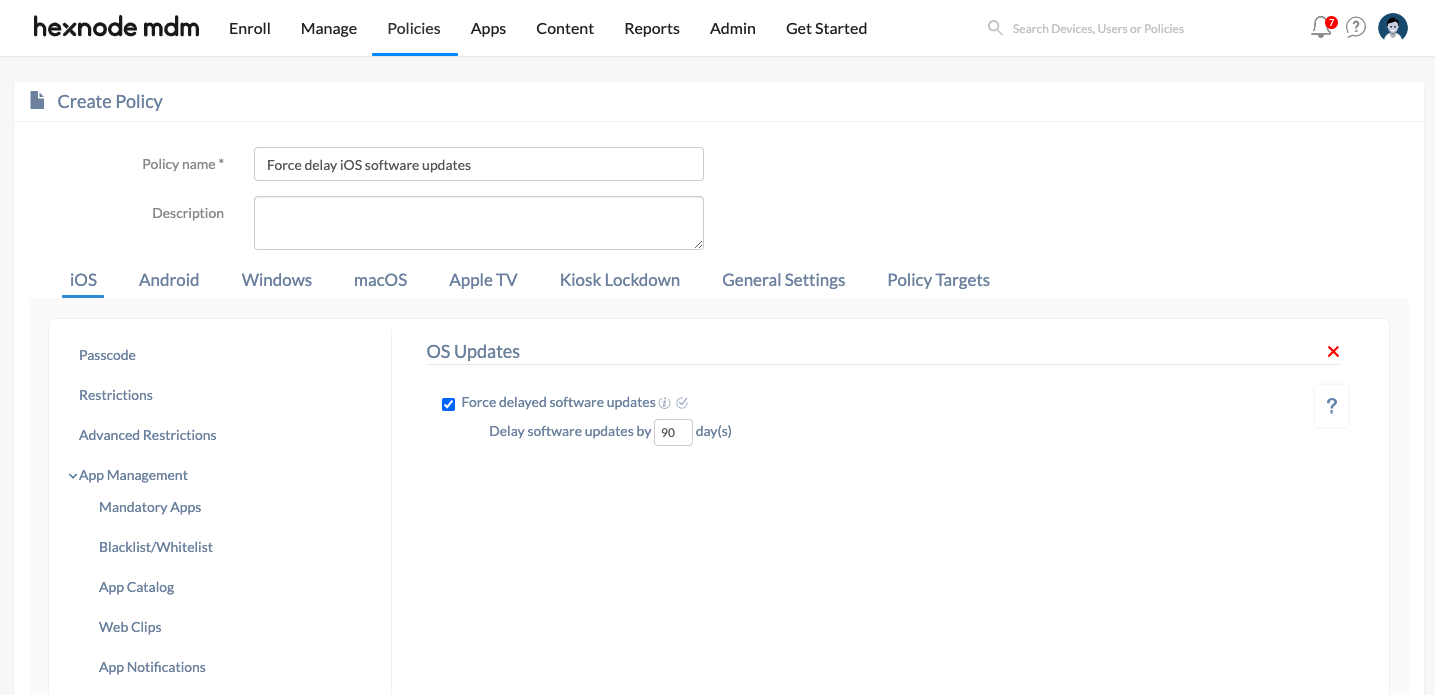Category filter
How to delay OS update on iOS devices
IT administrators can delay iOS updates on their supervised Apple devices with Hexnode UEM. Well, in most cases, delaying an iOS update gives you additional time to test the bugs and issues associated with the latest OS releases in your test environments. Thus, you can check the compatibility of your deployed applications. Also, updating all the devices at once may affect the enterprise network bandwidth. These use cases are usually preferred in educational organizations or for corporate-owned devices.
Hexnode allows you to delay OS updates for your devices running iOS 11.3+ for up to 90 days. During this interval, the user will not be able to see the update until the specified number of days after the software update release date. The default delay is 30 days. When the delay expires, users get a prompt to download and install the latest version of the software update available.
Delay iOS updates on iOS 11.3+ devices using Hexnode UEM

You can delay iOS updates for your devices by following the below steps:
- Navigate to Policies tab from your Hexnode portal.
- Choose an existing policy or click on New Policy to create a new configuration.
- Provide a suitable name for the policy if you are creating a new one.
- Click on OS Updates from iOS > Security.
- Select Configure option and then click on Force delayed software updates.
- Set the number of days for which the OS update must be delayed. You can set the time for up to 90 days from the date of release of the OS update.
- Go to Policy Targets tab and select the Devices/Device Groups/User/User Groups or Domains to which the policy is to be attached.
- Click on Save option.


